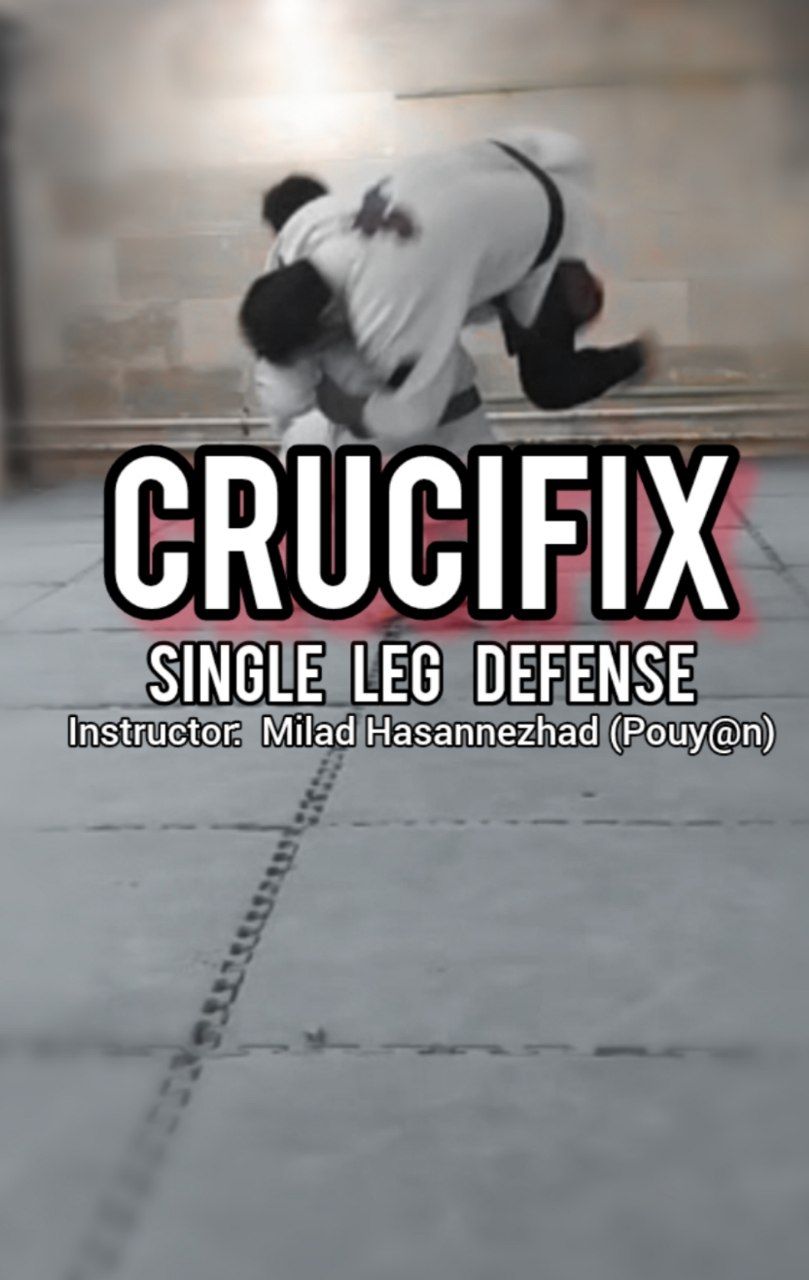زمین زدن حریف با تکنیک آمریکانا و تسلیم کردن با تکنیک آرمبار | Takedown By Americana and Submission
Takedown By Americana and Submission
Instructor : Milad Hasannezhad
زمین زدن حریف با تکنیک آمریکانا و تسلیم کردن با تکنیک آرمبار
مربی : میلاد حسن نژاد

⬇️⬇️⬇️ Click here
اینجا کلیک کنید ⬇️⬇️⬇️
جهت دیدن ویدئو آموزش در یوتیوب روی این گزینه کلیک نمایید 🔴🔴🔴
From Leveraged Takedowns to Joint Locks
This movement sequence represents a deep understanding of biomechanics, leverage, and the anatomical weaknesses of the human body. The technique has three key phases, each of which applies a new force system to the opponent's body.
🔴Phase 1: Leveraged Takedown and Control
Using Moment and Center of Gravity (COG) In this phase, controlling the opponent's hand and wrist acts as a lever. By rotating and stabilizing the opponent's arm, you increase the radius of rotation of the opponent's body. This shifts the opponent's center of gravity away from their support base (the legs) and pulls them in a direction of less resistance. As a result, a relatively small force applied to the joints far from the center of the body (the wrists and elbows) creates a huge torque, causing the opponent to fall.
🔴 Phase 2: Americana/Keylock Setup
Glenohumeral Joint or Shoulder Joint.
The Americana technique is a Torque-Based Joint Lock. In this step, the opponent's arm is fixed and directed to the back of the head or to the side of the body. Using the keylock form, you force the opponent's shoulder into severe external rotation and horizontal adduction. The final pressure causes excessive stretching of the anterior joint capsule and rotator cuff tendons, especially the subscapularis tendon.
🔴 Phase 3: Final Armbar Submission (Jūji Gatame)
Often, the opponent will straighten their arm to defend the Americana. This defense immediately opens the door to attack the next anatomical target: the elbow joint.
-Humeroulnar Joint (Humeroulnar Joint) or the elbow.
The armbar is a three-point lever system. Your torso and legs act as a pressing frame. The opponent's elbow joint rests on your fulcrum (usually the hip bone). The pressure back and down forces the elbow to hyperextend, i.e. move beyond the normal 90-degree range. This pressure directly stresses the tendons and collateral ligaments of the elbow joint, causing severe pain and the possibility of fracture or tear.
Author: Milad Hassannezhad (Pouyan)
از تیکدان اهرمی تا قفلهای مفصلی
این زنجیره حرکتی، نمایانگر درک عمیق از بیومکانیک، اهرم و نقاط ضعف آناتومیک بدن انسان است. این تکنیک سه فاز کلیدی دارد که در هر مرحله، یک سیستم نیروی جدید بر بدن حریف اعمال میشود.
🔴فاز ۱: تیکدان و کنترل اهرمی (Leveraged Takedown)
استفاده از ممان (Moment) و مرکز ثقل (Center of Gravity - COG) در این فاز، کنترل دست و مچ حریف به عنوان یک اهرم عمل میکند. با چرخاندن بازوی حریف و تثبیت آن، شما شعاع چرخش بدن حریف را افزایش میدهید. این کار، مرکز ثقل حریف را از روی پایههای حمایتیاش (پاها) منحرف کرده و او را به سمتی میکشد که مقاومت کمتری دارد. در نتیجه، نیروی نسبتاً کمی که بر روی مفاصل دور از مرکز بدن (مچ و آرنج) اعمال میشود، گشتاور عظیمی ایجاد کرده و به سقوط حریف میانجامد.
🔴 فاز ۲: آمادهسازی آمریکانا (Americana/Keylock Setup)
مفصل گلنوهومرال (Glenohumeral Joint) یا همان مفصل شانه.
تکنیک آمریکانا یک قفل مفصلی گشتاورمحور (Torque-Based Joint Lock) است. در این مرحله، بازوی حریف تثبیت شده و به سمت پشت سر یا طرفین بدن او هدایت میشود. شما با استفاده از فرم کیلاک، شانه حریف را مجبور به چرخش خارجی (External Rotation) و اَدِکشن افقی (Horizontal Adduction) شدید میکنید. فشار نهایی باعث کشیدگی بیش از حد کپسول مفصلی قدامی و تاندونهای روتاتور کاف، به ویژه تاندون ساباسکاپولاریس (Subscapularis) میشود.
🔴فاز ۳: سابمیشن نهایی آرمبار (Armbar - Jūji Gatame)
اغلب، حریف برای دفاع از آمریکانا، بازوی خود را صاف میکند. این دفاع، بلافاصله در را برای حمله به هدف آناتومیک بعدی باز میکند: مفصل آرنج.
-مفصل هومرواولنار (Humeroulnar Joint) یا همان آرنج.
آرمبار یک سیستم اهرم سهنقطهای است. تنه و پاهای شما به عنوان یک قاب فشاردهنده عمل میکنند. مفصل آرنج حریف روی نقطه اتکای شما (معمولاً استخوان لگن) قرار میگیرد. فشار به سمت عقب و پایین، آرنج را مجبور به هایپراکستنشن (Hyperextension) میکند، یعنی حرکت فراتر از محدوده طبیعی ۹۰ درجه. این فشار به صورت مستقیم تاندونها و رباطهای جانبی (Collateral Ligaments) مفصل آرنج را تحت تنش قرار داده و باعث درد شدید و احتمال شکستگی و یا پارگی میشود.
نویسنده: میلاد حسن نژاد (پویان)


